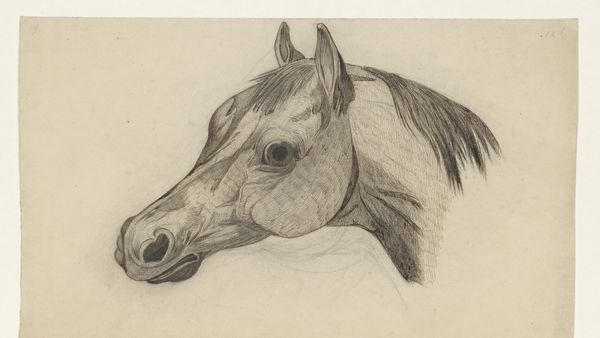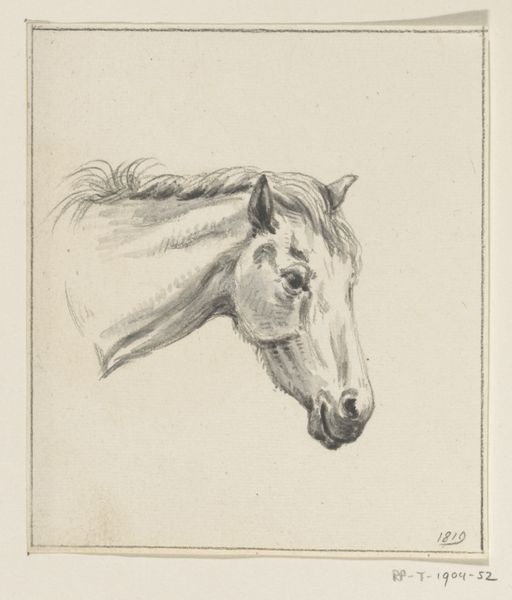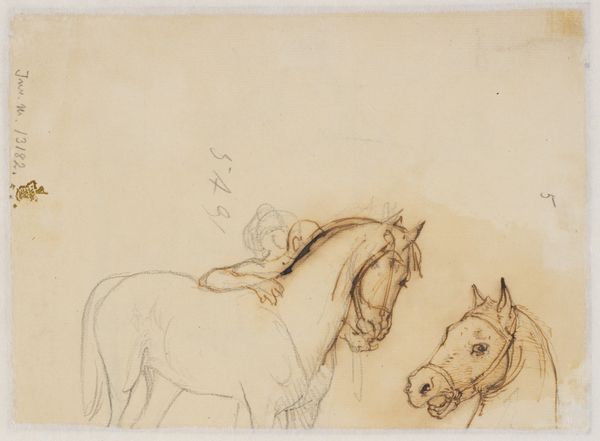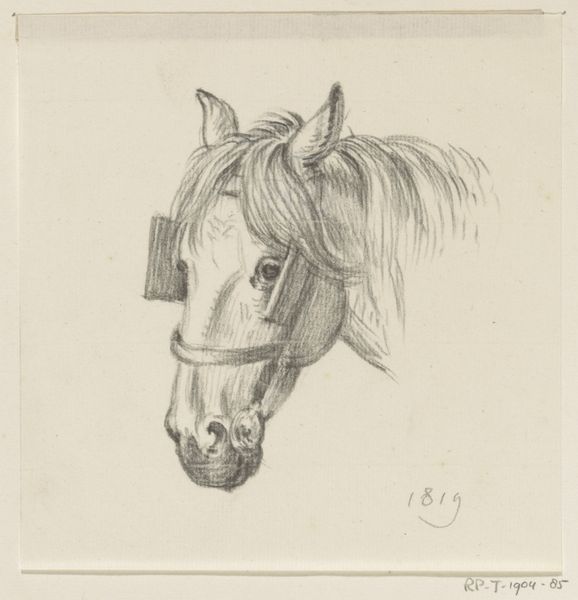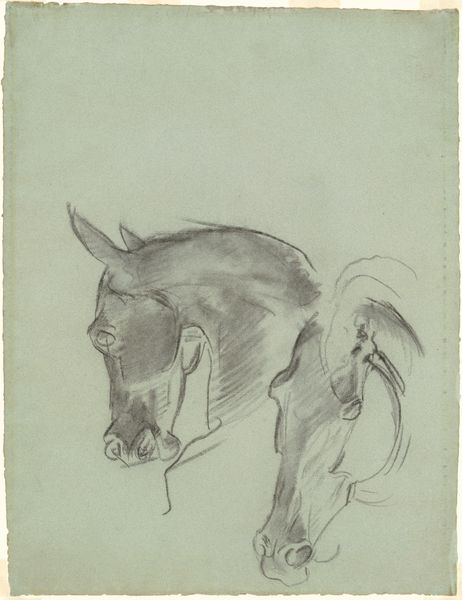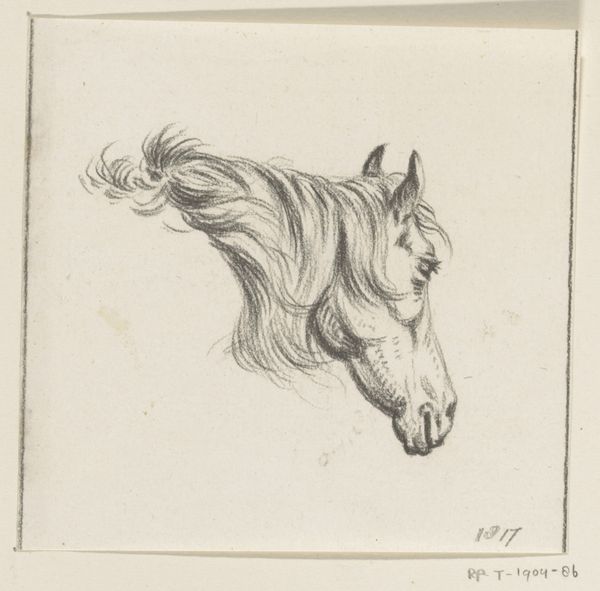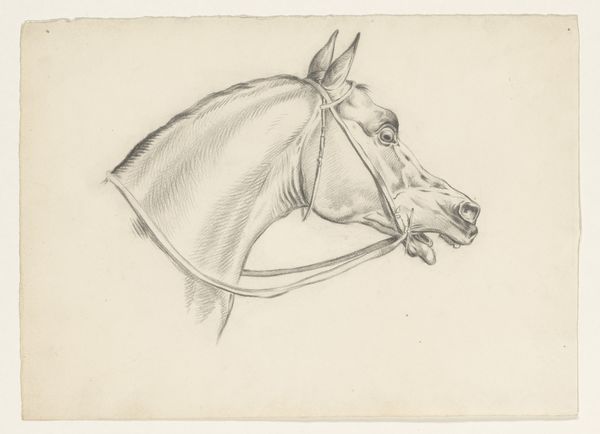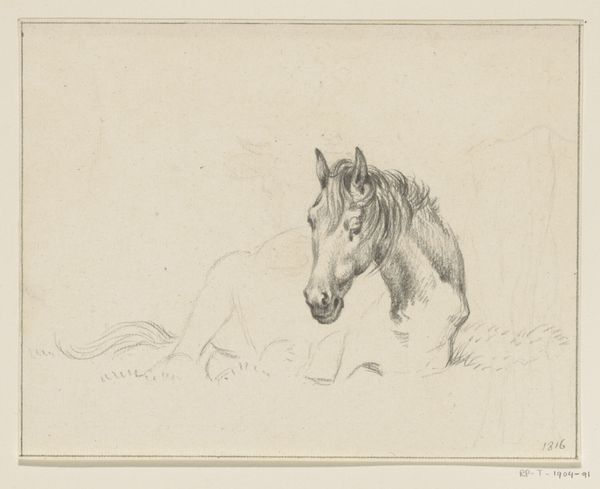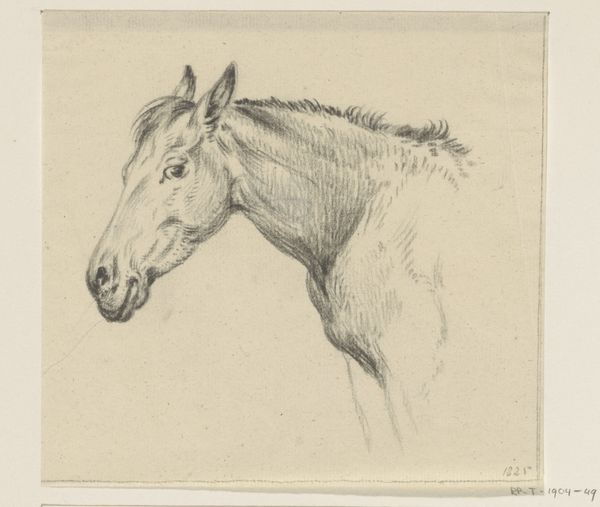
drawing, pencil, graphite
#
portrait
#
drawing
#
imaginative character sketch
#
toned paper
#
light pencil work
#
animal
#
pencil sketch
#
personal sketchbook
#
ink drawing experimentation
#
pencil
#
horse
#
graphite
#
sketchbook drawing
#
portrait drawing
#
pencil work
#
sketchbook art
#
realism
Dimensions: height 200 mm, width 240 mm
Copyright: Rijks Museum: Open Domain
Johannes Tavenraat made this study of a horse's head, sometime in the 19th century, using graphite on paper. It’s a humble combination of materials, but that doesn't mean it isn't sophisticated. The artist coaxes a full range of tones from the graphite, from almost imperceptible light grays to the solid dark shading that models the horse’s eye, nostril, and mouth. Look closely, and you can see the texture of the paper coming through. This is a deliberate choice, not a defect. Tavenraat is using the paper to enhance the image. In fact, the drawing is a kind of performance. It shows off the artist’s skill, and by extension, the value of academic training. At the time, there was a booming market for technically accomplished drawings like this, prized for their attention to detail. It’s no accident that the artist chose to depict a horse, a traditional symbol of wealth and status, as the subject of his art. This modest drawing, therefore, speaks volumes about the social and economic context in which it was made.
Comments
No comments
Be the first to comment and join the conversation on the ultimate creative platform.
